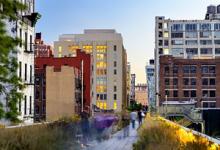Itämeren kaupunkien liiton kestävien kaupunkien komissio /Turun kaupunki
Country: FI
http://www.ubc-environment.net/
Partner budget: 490.675 EUR
Amount of ERDF funding: 368.006 EUR ERDF

P2 Sustainable use of common resources
2.3. Better urban planning in the Central Baltic region
Central Baltic
01.10.2015 - 31.12.2018
2.200.242 EUR
1.697.128 EUR ERDF
The project Baltic Urban Lab aims at improving urban planning by developing and testing new integrated models for brownfield regeneration. The project tackles an increasing need to build attractive, high-quality and sustainable urban areas that is a common challenge for all Central Baltic cities.
The project identifies and promotes already existing good practices on brownfield regeneration and facilitates exchange of experiences between planners and experts in the Central Baltic region. New planning tools and models promoting integrated management and co-creative urban planning are developed and tested on selected brownfield sites in the four project cities. The project aims for more inclusive urban planning encouraging the participation of different societal groups including citizens, NGOs, land owners, developers, businesses and other stakeholders in the planning process and maximize the use of knowledge and resources of different parties for the development of high quality living and working environment.
During the project, four cities produce concrete integrated plans and development strategies for selected brownfield sites creating base for development projects and better utilization of brownfields.
All in all, the project leads to an increased awareness of existing good examples and solutions for better management of urban brownfield areas. The project results in a more efficient interaction and cooperation among cities, land owners and developers and other relevant sectors involved in the urban development process in the participating cities and Central Baltic area.
Country: FI
http://www.ubc-environment.net/
Partner budget: 490.675 EUR
Amount of ERDF funding: 368.006 EUR ERDF
Country: SE
Partner budget: 231.937 EUR
Amount of ERDF funding: 173.953 EUR ERDF
Country: FI
www.utu.fi / www.brahea.utu.fi
Partner budget: 215.315 EUR
Amount of ERDF funding: 161.486 EUR ERDF
Country: LV
Partner budget: 228.903 EUR
Amount of ERDF funding: 194.567 EUR ERDF
Country: EE
Partner budget: 240.556 EUR
Amount of ERDF funding: 204.473 EUR ERDF
Country: FI
Partner budget: 399.678 EUR
Amount of ERDF funding: 299.758 EUR ERDF
Country: SE
Partner budget: 393.179 EUR
Amount of ERDF funding: 294.884 EUR ERDF
Country: FI
Country: FI
Country: LV
Country: FI
Country: SE
Country: EE
Baltic Urban Lab created and tested new integrated planning and partnership models that help turn brownfield areas into smart and sustainable city districts. Brownfields are abandoned or underused areas that have previously been used for example by industry or military.
One of the new ways for planning is the public-private-people partnership (4P) approach. 4P improves the inclusion of various public sector actors, private actors, residents, NGOs and of civil-society actors in the planning processes through improved dialogue and common understanding of goals.
In total, the project created four integrated urban plans. The plans were piloted in the Itäharju brownfield triangle in Turku (Finland), areas around the Mukusalas street in Riga (Latvia), inner harbour area in Norrköping (Sweden) and the area around the Skoone Bastion in Tallinn (Estonia). In these areas, geological surveys, visualisation models, opinion surveys, risk-assessments and citizen involvement tools were developed, among other things.
Collection of all publications on Baltic Urban Lab
Riga Council City Development department homepage
Riga Council City Development department homepage_17102017
Riga Council City Development department homepage_20092017
Ministry of Environmental Protection and Regional development of Latvia